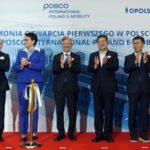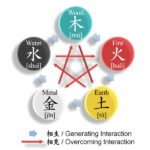Introduction to Korean Immigration
Korean immigration has a rich and complex history that dates back to the late 19th century. The earliest significant wave of Korean migrants occurred during the 1900s, primarily driven by the socioeconomic upheaval and the political circumstances of the time. With Korea under Japanese colonial rule from 1910 to 1945, many Koreans sought refuge and opportunities abroad, leading to the establishment of communities in countries outside of the United States, such as Japan, China, and Russia. This initial migration set the stage for later waves of movement that reflected changing global dynamics.
Following the end of World War II and Korea’s subsequent division into North and South Korea, migration patterns shifted dramatically. The Korean War (1950-1953) further intensified the need for many to seek safety abroad, with significant numbers fleeing to nations such as Canada, Australia, and various South American countries. The socio-political factors driving these migrations often included economic hardship, political oppression, and the pursuit of better living conditions and opportunities in more stable environments.
In the latter part of the 20th century, including the 1970s and 80s, a new wave of Korean immigrants emerged, primarily fueled by South Korea’s economic boom. Many individuals and families sought opportunities for education and employment, propagating significant Korean communities in metropolitan areas across the globe. Countries such as Canada, Australia, and the United Kingdom have since seen pronounced Korean populations, contributing to the multicultural landscape of these nations.
Today, Korean immigration continues to evolve, with individuals moving for a variety of reasons, including education, professional opportunities, and family reunification. As a result, the global Korean diaspora is diverse and encompasses a broad range of experiences, marking a significant aspect of modern migration patterns.
Early Waves of Korean Migration
The history of Korean migration is marked by significant waves that began prior to and during the tumultuous periods of Japanese occupation and the aftermath of World War II. The first major wave of Korean immigrants occurred in the early 20th century, primarily driven by economic hardship and political oppression. The prolonged Japanese rule over Korea, spanning from 1910 to 1945, led many individuals to seek refuge and better prospects abroad. During this period, many Koreans ventured to countries such as the United States, Brazil, and Canada, seeking improved living conditions and economic opportunities.
The dire economic conditions in Korea further exacerbated the plight of its citizens, prompting many to leave their homeland in search of work and stability. In the early 1900s, agricultural hardships due to typhoons and land dispossession compelled numerous farmers and laborers to embark on ships bound for foreign shores. Notably, in the United States, the first large communities of Korean immigrants found employment in agriculture and railway construction. Their contributions significantly shaped the industries in which they worked, although they often faced discrimination and was subjected to xenophobic sentiments.
The aftermath of World War II saw another surge in Korean migration, influenced by the division of Korea into North and South. Immigrants fleeing the violence and instability following the war sought safety and new lives in various countries. The development of each immigrant community varied; some individuals struggled to adapt to a new culture and language, while others successfully integrated and established thriving enclaves. These early waves of Korean migration not only highlight the resilience of Korean immigrants but also set the foundation for the diverse Korean diaspora that continues to evolve today.
The Impact of the Korean War on Immigration Trends
The Korean War, which unfolded between 1950 and 1953, had a profound impact on the dynamics of immigration from Korea, shaping patterns that resonate in the contemporary context. The war led to large-scale upheavals, resulting in a significant wave of refugees and immigrants fleeing the conflict. The chaotic conditions of the war period prompted many individuals and families to seek safety and economic opportunities outside Korea. This migration process significantly influenced the demographics of the Korean diaspora, leading to the establishment of vibrant communities in various countries.
Initially, a considerable number of Koreans sought refuge in neighboring nations, including Japan and China. Subsequently, the United States and other countries began to accept Korean refugees. The United States, under the influence of various policies enacted to support allied nations, saw an influx of Korean nationals. The U.S. Immigration and Nationality Act of 1952 enabled the admission of Korean refugees and led to the establishment of distinct Korean communities across the country. This provision not only facilitated humanitarian assistance during the immediate aftermath of the war but also sowed the seeds for future immigration waves.
The conscientious policies implemented in the years following the war fostered further Korean migration. As the country stabilized, many sought opportunities abroad for economic advancement and educational pursuits. The patterns of migration that emerged were diverse, reflecting both voluntary and forced displacement, as well as socio-economic aspirations. Consequently, the historical backdrop of the Korean War has contributed to a multifaceted Korean diaspora characterized by different waves of immigration, each shaped by its unique set of challenges and opportunities.
Today, these communities continue to evolve, intertwining their heritage with the cultures of the host countries while maintaining a connection to their Korean roots. The legacy of the Korean War remains evident in the demographics and socio-cultural fabric of Korean immigrants across the globe.
Korean Communities in Asia and the Pacific
The Korean immigrant population has significantly influenced various countries across Asia and the Pacific, presenting unique patterns of cultural adaptation, social integration, and the diverse challenges they encounter. In China, for example, the Korean community is chiefly concentrated in the northeastern regions, particularly in cities like Yanbian. This area has seen a steady influx of Korean immigrants who contribute not only to the local economy through entrepreneurship but also in the cultural landscape by introducing Korean cuisine, traditions, and media. Their ability to maintain a distinct cultural identity while assimilating into Chinese society is a notable phenomenon, illustrating the complexities associated with migration.
In Japan, significant historical events, including the Japanese occupation of Korea, have shaped the relationship between Koreans and the host nation. The Korean population in Japan, often referred to as Zainichi Koreans, has faced challenges related to discrimination and identity. Despite these hurdles, many in this community have found ways to thrive, creating a blend of Korean and Japanese cultures that enriches both. Their integration has been particularly visible in areas such as Seoul-to-Tokyo cultural exchanges, where shared experiences facilitate dialogue and understanding.
Australia has recently emerged as a prominent destination for Korean immigrants, contributing to a multicultural society. The growing Korean population in cities like Sydney and Melbourne has led to the establishment of community centers and cultural festivals that celebrate their heritage. Social integration into Australian life often involves navigating the balance between preserving cultural traditions and embracing a new societal framework. The challenges they face, including language barriers and economic adaptation, highlight the complexities inherent in their journey. Overall, Korean communities across Asia and the Pacific showcase a rich tapestry of cultural exchange and resilience, indicative of the broader immigrant experience.
Korean Immigration to Canada and Europe
The Korean immigrant community has seen notable growth in both Canada and various European countries, driven by a multitude of factors. One of the primary motivations for Koreans migrating to Canada is the pursuit of better employment opportunities and higher quality education. The country’s welcoming immigration policies and multicultural environment have made Canada an attractive destination. In the context of Europe, countries such as Germany and the United Kingdom have become prominent destinations for Korean immigrants seeking to expand their horizons and embrace new cultural experiences.
In Canada, Korean immigrants have significantly contributed to the socio-economic landscape. They have established thriving businesses, particularly in urban areas such as Toronto and Vancouver, where these communities often serve as vital cultural bridges. Additionally, the increasing presence of Korean culture in Canada, as evidenced by the popularity of Korean food, music, and festivals, underscores the positive impact of this community. Employment sectors such as technology, healthcare, and academia have also benefited from the skills and expertise of Korean immigrants, enhancing the labor market diversity.
Similarly, in Europe, Korean immigrants have played an essential role in the cultural and economic spheres. In Germany, for instance, the Korean community has found substantial success in various industries, including automotive and engineering, while also contributing to the vibrant multicultural fabric of major cities like Berlin. The distinct experiences of these immigrants compared to their counterparts in the United States often reflect their integration journeys, shaped by the host countries’ unique socio-political landscapes. Many have formed tight-knit communities that provide support and networking opportunities, helping to alleviate some challenges associated with relocation.
Overall, the growth of Korean communities in Canada and Europe highlights the diverse motivations and experiences of immigrants, emphasizing their resilience and contribution to the global diaspora.
Social and Cultural Contributions of Korean Immigrants
Korean immigrants have significantly enriched the social and cultural landscapes of their host countries through various contributions. One of the most notable aspects of their influence is in the culinary realm. The global popularity of Korean cuisine, characterized by dishes such as kimchi, bulgogi, and bibimbap, exemplifies how these immigrants have introduced their traditional flavors to new audiences. Korean restaurants have proliferated in many cities worldwide, offering not only authentic dishes but also fostering cultural exchange and appreciation among diverse populations. The culinary contributions of Korean immigrants have indeed become a bridge connecting different cultures.
In addition to gastronomy, Korean immigrants have made substantial contributions to the arts, promoting a better understanding of Korean culture. Through music, dance, and visual arts, they have showcased their heritage while integrating elements from their host societies. The global phenomenon of K-Pop serves as a prime example—Korean musicians and entertainers have cultivated a vast international following, inspiring a new generation of artists and fans across borders. Festivals celebrating Korean culture, including traditional music and dance performances, also provide platforms for cultural exchange, enabling interactions with local communities.
Community engagement is another critical aspect of how Korean immigrants have influenced social dynamics. Many have actively participated in local organizations and initiatives, addressing issues such as integration, education, and social welfare. By establishing cultural associations and participating in civic activities, they have fostered solidarity among their community members while promoting dialogue with other ethnic groups. These efforts not only help preserve their cultural identity but also contribute positively to the local economy and social fabric, showcasing the dual role of Korean immigrants as both cultural custodians and active participants in their new societies.
Challenges Faced by Korean Immigrants
The journey of Korean immigrants is marked by a variety of challenges, particularly as they adapt to life in foreign countries. Among the most significant obstacles are language barriers, which can impede effective communication and integration into local communities. Many Korean immigrants find themselves struggling to navigate essential services, such as healthcare and education, due to limited proficiency in the host country’s language. This challenge can lead to feelings of isolation and hinder opportunities for employment, as language skills are often a prerequisite for many jobs.
Another prevalent issue faced by Korean immigrants is discrimination. In various countries, including Canada, Australia, and European nations, Korean immigrants may experience biases that stem from cultural misunderstandings or preconceived notions. Such discrimination can manifest in the workplace, affecting hiring practices, promotions, and the overall work environment. As a result, many Korean immigrants find it challenging to establish their professional identity and secure stable employment, further complicating their adjustment process.
Additionally, legal immigration status plays a crucial role in shaping the experiences of Korean immigrants. In some cases, individuals may enter a country on a temporary visa, exposing them to uncertainties regarding their long-term residency. This precarious legal standing can hinder access to social services, educational opportunities, and basic rights, leaving immigrants vulnerable to exploitation. The challenges associated with legal status often vary significantly from one country to another, with some nations offering more supportive frameworks than others.
In navigating these hurdles, it is essential to acknowledge the resilience of Korean immigrants, who continue to forge paths for themselves and their families despite the complexities they encounter. Understanding the multifaceted challenges they face is crucial for fostering supportive environments that promote successful integration and cultural exchange.
Korean Millennials and Gen Z: A New Wave of Immigrants
In recent years, a significant number of Korean Millennials and Gen Z individuals have chosen to migrate abroad, driven primarily by the quest for better educational and employment opportunities. Unlike their predecessors who often pursued immigration in search of stability or escape from political tension, this younger generation is motivated by global perspectives and a desire for personal and professional growth. They typically seek experiences that can enrich their understanding of different cultures while enhancing their job prospects in an increasingly globalized job market.
Education serves as a powerful catalyst for this demographic’s immigration patterns. Many young Koreans opt to study at prestigious international universities, believing that an overseas education will provide them with a competitive edge in their careers. Institutions in countries such as Canada, the United Kingdom, and Australia are particularly attractive due to their diverse environments and strong academic reputations. Additionally, the experience of living abroad often helps them build a global network, essential for their future career success.
Upon relocating, Korean Millennials and Gen Z face a unique set of challenges and opportunities that differ markedly from earlier generations. Cultural integration presents both obstacles and rewards; while many younger immigrants embrace global cultural trends, they also experience the pressure to preserve their Korean identity. The advent of social media has played a pivotal role in this integration process, allowing them to connect with both local communities and their heritage, fostering a sense of belonging and identity across borders.
Furthermore, this new wave of immigrants tends to prioritize work-life balance and personal fulfillment, shifting away from the traditional pursuit of financial stability that characterized earlier generations. They actively seek workplaces that value their individuality and contribute to their overall well-being. As a consequence, the motivations and experiences of these younger Koreans are reshaping the narrative surrounding Korean immigration, reflecting emerging global trends and cultural exchanges.
Conclusion: The Future of Korean Immigration
The journey of Korean immigrants has been marked by numerous historical milestones, significantly shaping their experiences and patterns of migration. As the global landscape continues to evolve, it is essential to reflect on how developments impact the future of Korean immigration. Current trends highlight a growing inclination toward countries beyond the United States, influenced by factors such as remote work, political changes, and socio-economic conditions in both home and host countries.
As the concept of work increasingly embraces flexibility and virtual environments, many Koreans are finding opportunities to work remotely. This trend empowers individuals to relocate to more favorable living conditions while maintaining their professional ties to major corporations based in South Korea. Locations such as Canada, Australia, and European nations are becoming attractive options, offering robust support systems for expatriates paired with desirable lifestyle choices. This shift may lead to an increase in Korean communities emerging in these countries, affecting future immigration patterns.
Moreover, political climates and international relations will also play a crucial role in shaping the future of Korean immigration. The current geopolitical tensions in the Asia-Pacific region, along with evolving trade agreements and diplomatic relationships, can obstruct or facilitate migration. Such external pressures may potentially compel Koreans to seek stability elsewhere, prompting a surge in immigration to more politically stable nations.
As we look to the future, it becomes vital to recognize the adaptability and resilience of Korean immigrants. The interplay between cultural preservation and integration into new societies embodies their journey. By observing these trends, one can foresee a dynamic Korean diaspora that continues to thrive while navigating the complexities of global migration in an ever-changing world.














